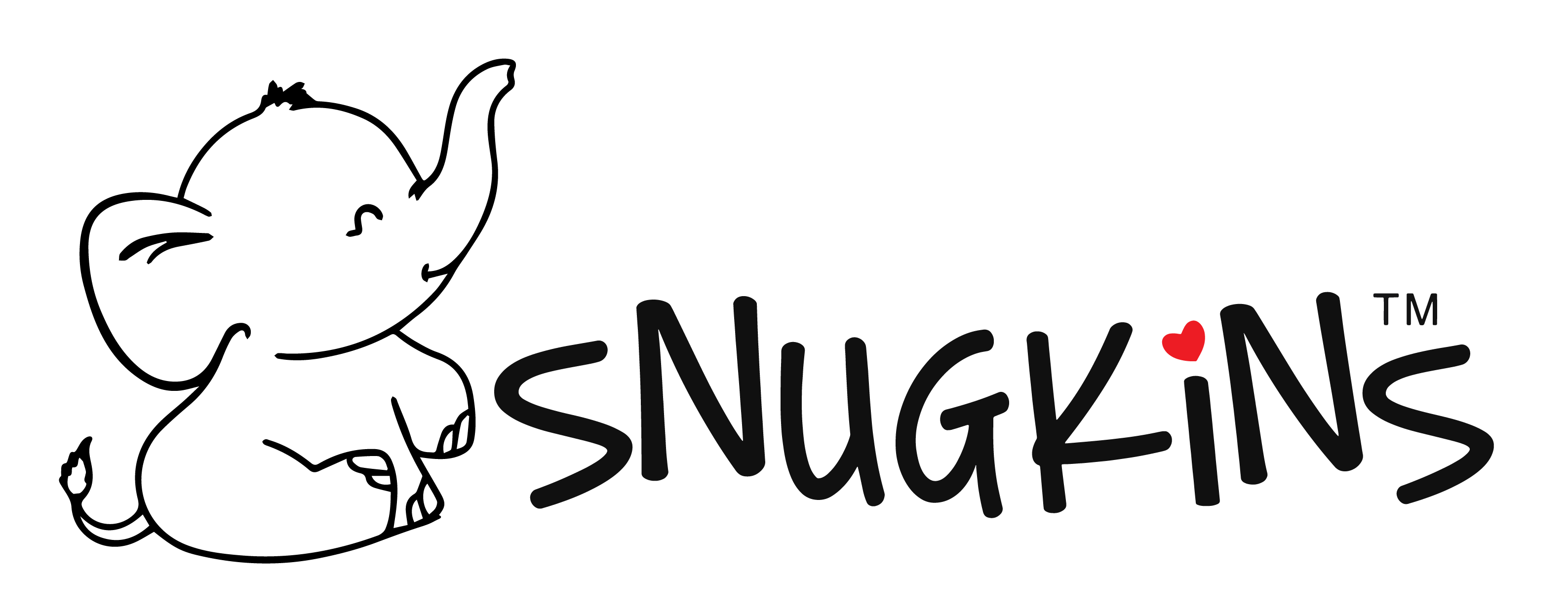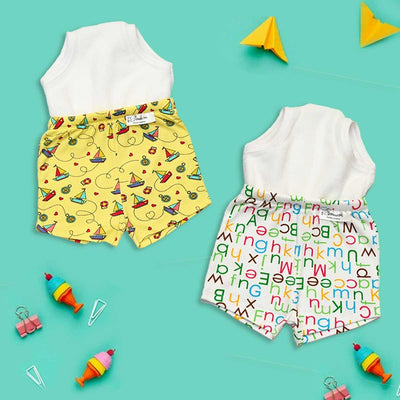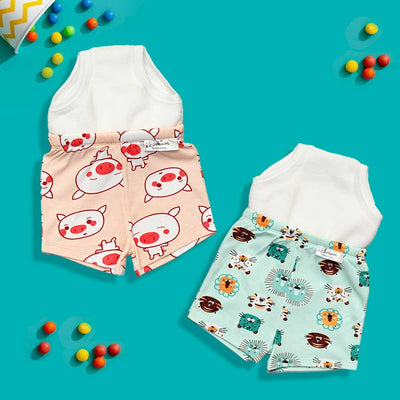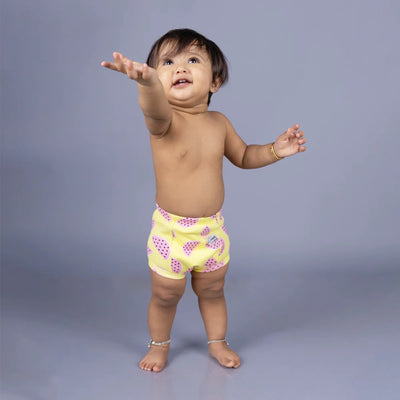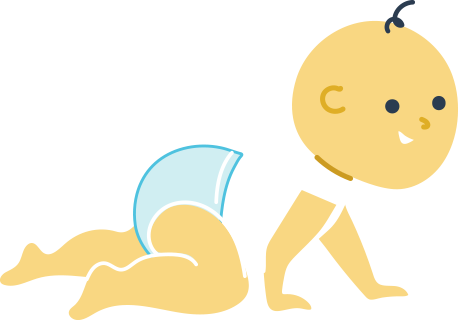How Long Does Potty Training Take?
Potty training is a developmental milestone that has numerous guides - but one of the most common questions new and seasoned parents ask is: How long will this take? While every child is unique, understanding the typical timeline and stages can help you prepare, stay calm, and support your toddler with confidence.
1. Understanding the Typical Timeline
Most toddlers begin to develop potty training readiness cues around 18 months and continue to do so until they are 3 years old. For many parents, it takes anywhere from a few weeks to several months for their child to consistently use the potty. Some toddlers complete training in as little as 3 to 4 weeks, while others take 3 to 6 months - and that’s perfectly normal.
A gradual, supportive approach helps ensure long-lasting success. Rather than focusing on a fixed number of days, it’s best to track gradual progress and use aids like padded underwear to make the process smoother and less stressful.
-
Week 1–2: Heightened awareness of bodily signals and a few successful potty events.
-
Week 3–4: Increased ability to hold urine or bowel movement, fewer accidents, and occasional independent trips to the potty.
-
Month 2–3: Dry during naps, beginning of nighttime control, and decreased accidents during the day.
2. Factors That Influence How Long It Takes
Several factors affect the pace of potty training:
-
Child’s readiness: Signs like the ability to tell you when they’ve gone, following simple directions, and showing interest.
-
Consistency: A dependable routine helps solidify habits faster.
-
Supportive environment: Positive reinforcement, not pressure, encourages progress.
-
Approach: Whether using training pants, cloth diapers, or transitioning directly to underwear, comfort matters.
-
Individual temperament: Some children adapt quickly, while others need more gradual encouragement.
3. Setting Realistic Expectations
Set a positive mindset from the start. Expect occasional setbacks and interruptions - illness, travel, or growth jumps can cause regression. Knowing that regression is normal helps reduce frustration and keeps the journey positive.
Encourage your child with praise like "You're doing great" or “I’m so proud of you” Celebrate small wins: dry mornings, sitting on the potty, or asking for underwear instead of a diaper.
4. The Role of Training Apparel
Transitioning from diapers to underwear is a big part of the process, and choosing the right kind matters. Starting with soft, well-fitting padded underwear can give toddlers a sense of independence while still offering the security they need. This gentle shift helps build comfort, confidence, and awareness early in the potty training journey.
Using training pants that feel soft and familiar like underwear helps children sense differences without fear. Some parents choose breathable options that mimic underwear feel but still offer absorbency. Others use reusable cloth diaper alternatives that help toddlers feel wetness and adjust pace accordingly.
Subtle hints of advanced, thoughtful design - like what you might expect from trustworthy brands - can make the process smoother for both the child and the parent.
5. From Diapers to Underwear: Step-by-Step Journey
-
Phase 1: Explore and Observe (1–2 weeks)
Let your toddler watch you or an older sibling use the toilet; provide a small potty and let them explore. Begin using padded underwear or cloth alternatives during the day for lessons in sensation and awareness. -
Phase 2: Practice and Encourage (2–4 weeks)
Encourage your child to sit on the potty at regular times - such as after naps, meals, or whenever they show signs of needing to go. Reward attempts and praise during dry times. When successes begin, introduce fun, colourful padded underwear to boost their interest and help bridge the gap between diapers and regular underwear. -
Phase 3: Gradual Independence (1–2 months)
Your toddler begins verbalising needs (“I need potty”) or walks toward the potty. Offer soft, comfortable, padded underwear gently before fully transitioning. Padded underwear can still be useful during outings or new situations to build confidence. -
Phase 4: Full-Day Control & At-Home Independence (2–3 months)
Accidents become less frequent as your toddler starts following a regular bathroom routine throughout the day. At this stage, toddlers often feel proud and excited to wear padded underwear, which offers a sense of independence while still providing some security - unlike diapers. This phase focuses on boosting confidence with comfortable, easy-to-manage options.
6. When to Seek Help
If your toddler shows no interest in potty training by age 3, or refuses even softly, or regression continues beyond a few weeks of progress, consider discussing with a paediatrician. Physical readiness, emotional readiness, and sometimes minor issues like constipation can slow things down. A health professional can help identify and address these issues.
7. Why Patience and Consistency Matter
The real key to how long potty training takes isn’t a fixed timeline - it’s consistency and encouragement. Toddlers picking up on calm energy feel safer, less pressured, and more empowered. The goal is a confident, comfortable child - not just dry underwear.
Especially when certain brands provide well-designed undergarments, they help ease the learning curve. Softness, fit, and breathability matter for comfort - and even confidence. Indirectly, some families trust gear inspired by thoughtful design values - like what you might find from just-right, gentle solutions that parents love.
Final Thoughts
To sum up:
-
Most toddlers potty train in 3 to 6 months, though some can do it faster.
-
Training success depends on readiness, routine, reinforcement, and comfort.
-
Transitioning to underwear for infants - equivalent comfort in toddler sizes - along with soft, absorbent training pants, helps a lot.
-
Every child’s journey is unique. Celebrate progress, offer reassurance, and stay consistent.
Potty training isn’t a race - it’s a gradual learning journey that every child takes at their own pace. With patience, smart tools, and a confident, calm parent leading the way, your toddler will get there in their own time. And as always, thoughtful design and comfort - some of the same qualities parents appreciate - can smooth the path to independence.
And when it comes to making this transition smoother, Snugkins Potty Training Pants can be a real game-changer. They provide the perfect balance between the safety of diapers and the independence of underwear, giving your child the comfort to learn and the confidence to succeed. With Snugkins, you’re not just speeding up potty training - you’re making it a positive experience for both you and your child.
FAQs on Potty Training
1. How long does potty training usually take?
On average, potty training takes 3–6 months once your child shows readiness. However, some children may take a few weeks, while others may need a year or more - especially for nighttime dryness.
2. At what age should I start potty training?
Most children show readiness between 18 and 24 months. Signs include staying dry for longer periods, showing interest in the toilet, or being able to communicate their needs. Starting too early may slow down progress.
3. Why is my child taking longer than others?
Every child is different. Factors such as temperament, readiness, consistency in training, and family routines all play a role. Delays are normal - some children may not master potty training until age 3 or 4.
4. Is nighttime potty training different?
Yes. Nighttime dryness usually comes later than daytime training, often between the ages of 5–7. It depends on bladder development, depth of sleep, and genetics. Using training pants at night can help prevent stress from accidents.
5. What if my child resists potty training?
Resistance is common. Take a break for a few weeks and try again when your child seems more ready. Avoid punishment - gentle encouragement and rewards (like praise or small treats) work better.
6. Can potty training pants help speed up the process?
Yes! Training pants like Snugkins Potty Training Pants are designed to help toddlers feel the difference between wet and dry, encouraging faster learning. They protect against small accidents while still giving children the independence of underwear.
7. When should I be concerned about potty training delays?
If your child is over 4 years old and still shows little progress, or if there are physical difficulties (pain, fear, or constipation), it may help to consult a paediatrician.

